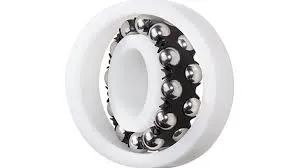
Nov . 28, 2024 04:46 Back to list
Comparing Angular Contact and Deep Groove Ball Bearings Key Differences and Applications
Understanding the Difference Between Angular Contact and Deep Groove Ball Bearings
Bearings play a crucial role in mechanical systems, allowing for smooth and efficient rotation while minimizing friction between moving parts. Among the various types of bearings, angular contact and deep groove ball bearings are two of the most commonly used types, each designed for specific applications and performance criteria. Understanding the differences between these two types can help in selecting the right bearing for a given application.
Basic Design and Structure
Deep Groove Ball Bearings are characterized by their simple design. They consist of an outer ring, an inner ring, and a set of steel balls that are nestled between the rings. The grooves on both the outer and inner rings are deep, allowing the balls to maintain contact with the rings at a wide range of angular positions. This design allows for radial and moderate axial loads, making it a versatile choice for numerous applications.
In contrast, Angular Contact Bearings are specifically designed to accommodate axial loads in one direction, along with radial loads. The angle at which the balls contact the raceway is a key aspect of their design. Unlike deep groove bearings, the contact angle in angular contact bearings is significantly greater (typically ranging from 15° to 40°), which enables them to handle larger axial loads. This makes them ideal for applications where directional thrust loads are predominant.
Load Handling Capabilities
One of the most significant differences between these two bearing types lies in their load handling capabilities. Deep groove ball bearings can support both radial and axial loads, but their axial load capacity is limited. They are best suited for applications with predominantly radial loads and moderate axial loads, making them suitable for everyday machinery like electric motors, conveyors, and pumps.
On the other hand, angular contact ball bearings excel in applications where axial loads are present. They are commonly used in situations involving high-speed operations or where there is a need for precise positioning. For example, they are often found in spindle applications in machine tools, where both radial and axial support are crucial for performance and accuracy.
difference between angular contact and deep groove ball bearing

Operational Speed and Performance
Speed is another crucial factor where these two bearing types differ. Deep Groove Ball Bearings can operate at high speeds due to their lower frictional heat generation and reduced rolling resistance. This capability makes them ideal for applications requiring high rotational speeds, such as in electric motors or fans.
Conversely, Angular Contact Bearings, while they can also handle significant speeds, may not be as efficient as deep groove bearings in this regard. However, their design enables them to provide superior performance under axial load conditions, making them invaluable in high-precision applications, despite potentially lower speed ratings compared to deep groove bearings.
Arrangement and Installation
When it comes to installation and arrangement, deep groove ball bearings can be used in pairs, but they are primarily designed to function individually or in simple arrangements. On the other hand, angular contact bearings are typically installed in pairs or sets, arranged in a way that allows them to fully utilize their load capacities. This can be a critical consideration when designing machinery that requires precise alignment and load distribution.
Conclusion
In summary, choosing between angular contact and deep groove ball bearings depends significantly on the application's requirements. While deep groove ball bearings are versatile, accommodating both radial and some axial loads, angular contact bearings are specifically designed for scenarios where axial loads are paramount. Their unique design aspects allow for improved load handling, stability, and precision in high-demand applications. Understanding these differences is key to making informed decisions in bearing selection, ensuring optimal performance and longevity in mechanical systems.
Latest news
-
Grooved Ball Bearing Design and Functionality
NewsJun.04,2025
-
Concrete Mixer Bearing Load Capacity Testing
NewsJun.04,2025
-
6004 Bearing Dimensions in Robotic Joint Designs
NewsJun.04,2025
-
Advantages of Single-Row Deep Groove Ball Bearings
NewsJun.04,2025
-
Applications of Deep Groove Ball Bearings in Automotive Systems
NewsJun.04,2025
-
Innovations in Bearing Pressing Machine Design
NewsJun.04,2025
